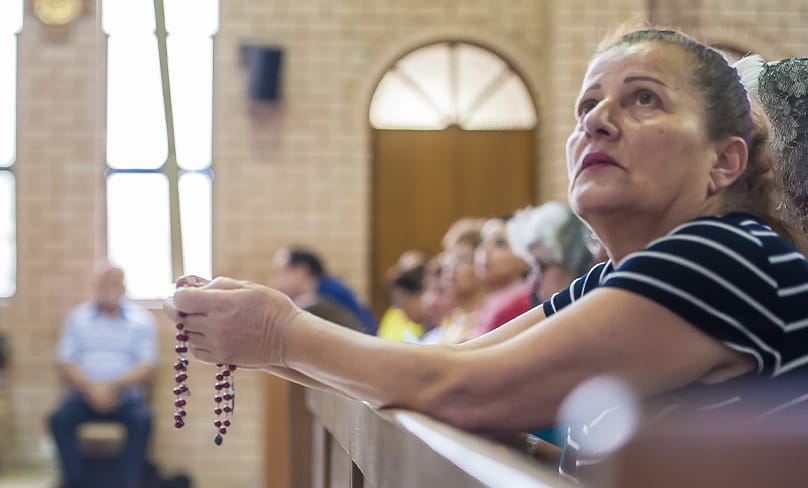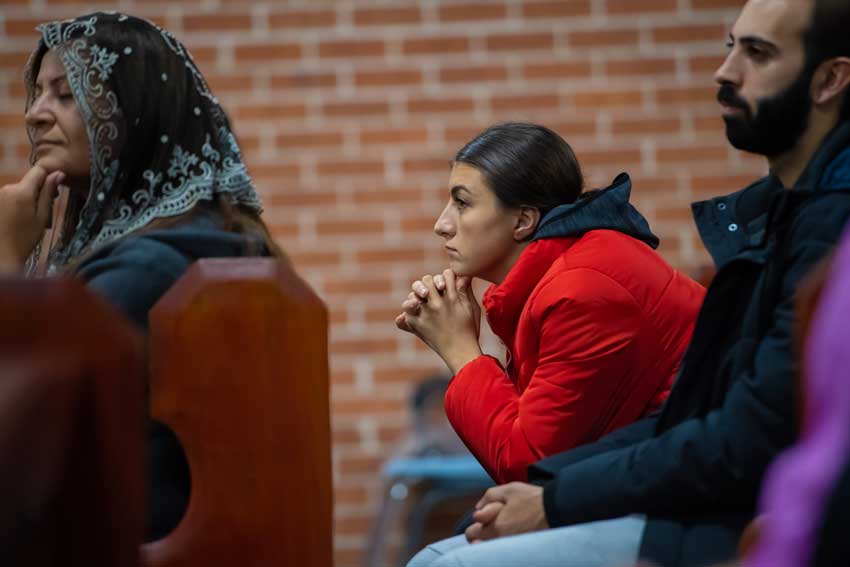
The human soul is poised between heaven and earth, eternity and time, the supernatural and the natural.
We seek to maintain a steady balance so that being in the world, we are oriented towards God; while living our earthly life, we are mindful of the divine realities which created and now sustain this physical realm.
“The Jesus Prayer” is a bridge which we can climb, to ascend from here to there. The roots of this prayer go right back to Our Lord Himself.
The words, “Lord Jesus Christ, Son of God, have mercy on me,” are derived from Luke 18:13, the story of the Pharisee and the Publican.
The prayer we know today has several forms, and we can use different ones at different times: sometimes one small word can evoke quite a special thought, feeling, or attitude.
There are times when we should pray and do nothing else. There are also times when we have to attend to our other duties. After all, as we are taught in Chapter 3 of the Book of Ecclesiastes, there is a time to every purpose under heaven.
“… we can hear the wordless echo of the Jesus Prayer, although engaged in other activities, and feel something of the presence of God.”
One aspect of the mystery of time and eternity is that as we are going about our daily activities, we can also be praying: although then the prayer will not be as it can be when we are praying first and foremost.
To be clear: it is good to add prayer to other occupations, but it is not to add other occupations to prayer.
With practice, we can hear the wordless echo of the Jesus Prayer, although engaged in other activities, and feel something of the presence of God.
Much of this knowledge is preserved in the texts of the Philokalia. A Russian version of the Jesus Prayer was popularised through The Way of a Pilgrim. That book commences with the anonymous pilgrim (probably a partly fictional and part real character) who heard St Paul’s exhortation to: “Pray without ceasing” (1 Thessalonians 5:17).
Eventually he finds a monk who takes him to a monastery where he learns that:
“The continuous Prayer of Jesus is a constant uninterrupted calling upon the divine Name of Jesus with the lips, in the spirit, in the heart; while forming a mental picture of His constant presence, and imploring His grace, during every occupation, at all times, in all places, even during sleep. The appeal is couched in these terms, “Lord Jesus Christ, have mercy on me.”

The monk then read to him from the Philokalia. At first, the practice went well, but then the pilgrim started to find his mind clouding and started to suffer distress.
When he returned to the monk, he was read some more, and was given prayer beads. He was told to use the beads and to say, three thousand times a day: “Lord Jesus Christ, have mercy on me.”
The count was soon increased, but what is important is that the beads were found necessary to keep his mind steady.
The rosary is absolutely basic: it keeps us linked to the body (and stops us getting distressed), and it is a support for the attention.
It also helps wonderfully with knowing how many prayers we have said, because the Jesus Prayer yields the best results when a specific number of prayers is chosen in advance, e.g. 1,000 a day, with 500 before 12 noon and 500 after.
Note, too, that when the pilgrim is taught, he is not told just to say the words. Rather, he is also taught that it includes;
“the rosary is absolutely basic: it keeps us linked to the body (and stops us getting distressed) and it is a support for the attention”
(1) a constant and uninterrupted calling upon the divine Name of Jesus with the lips (so that it is said out loud, at least sometimes), (2) in the spirit, (3) and in the heart, while (4) forming a mental picture of His constant presence, and (5) imploring His grace.
What is left out here but is found in the Philokalia, relates to a fuller form which is called “The Prayer of the Heart.”
This adds (6) the need to observe the breath while praying: not to interfere, just to watch it. (7) To decide how many prayers to say, and (8) to use the rosary, at least at the start.
That makes eight basic elements all together. But there is a ninth to make it practical: (9) you need to have a spiritual director who can watch you, because little things get forgotten or other things sneak into the practice, and suddenly it has become something different.
We need a guide to keep us on the right path, to watch for when our ego starts to join in, to see the things we do not and cannot see for ourselves.
And that is the basis of the Prayer of the Heart and of the Jesus Prayer.
Related Articles:
